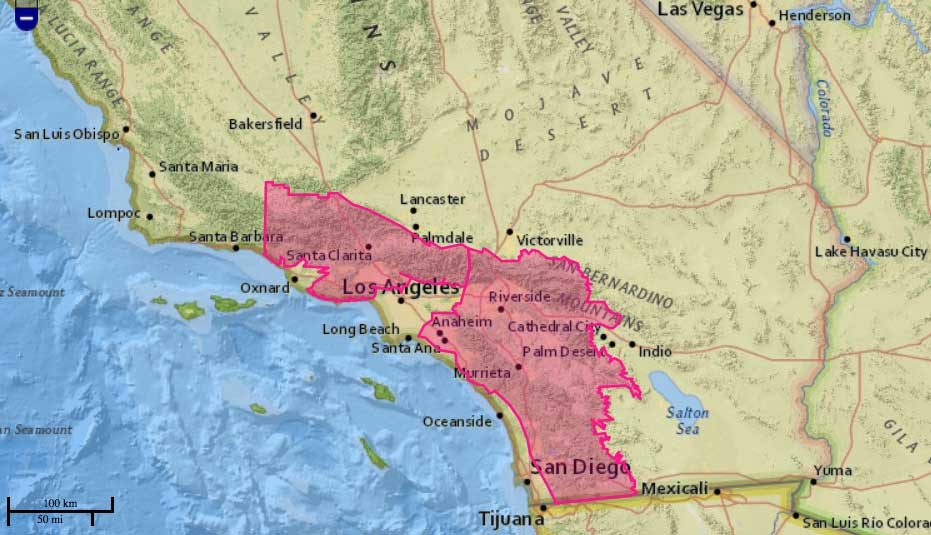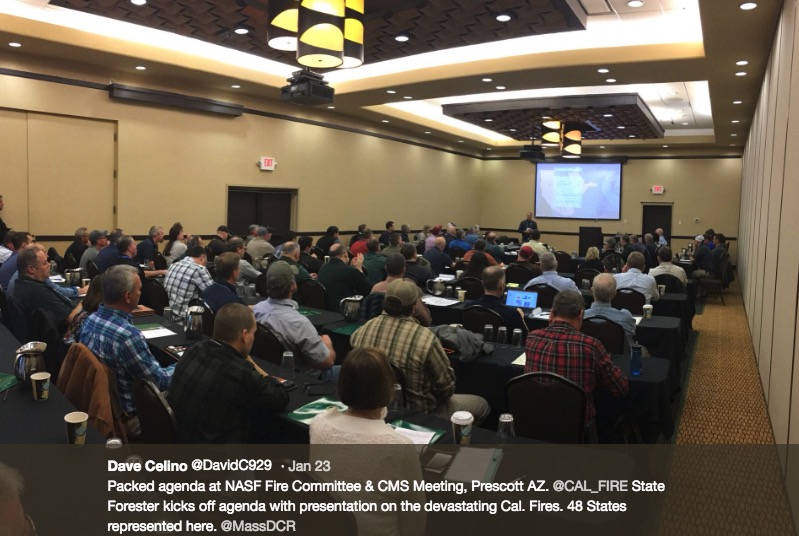Above: A firefighter on the Rose Fire near Lake Elsinore, California, July 31, 2017. Photo by Jeff Zimmerman.
The first time I heard about the concept of terrorists using wildfire as a weapon in the United States was when Dick Mangan, the President of the International Association of Wildland Fire wrote an editorial for the March/April, 2005 issue of the organization’s magazine, Wildfire. Here is an excerpt:
…The massive increases in the US budget for protection from terrorism has been mostly sent to Police and Structural Fire Departments. But, wait: what about the threat of terrorist-caused wildland fires in our forests, community watersheds and wildland-urban interface? Who’s worried about that threat, what are they doing about it, and how much is being spent to fund the efforts to prevent it?
The history of fire being used as a tool of warfare is well documented: Native Americans used fire against their enemies, both other tribes and against the expanding European whites; the Aboriginal people of Australia also used fire to discourage the incursion of the British settlers onto their island.
In World War II, the Japanese launched “fire balloons” against the western US, and while largely unsuccessful, did start a few fires, and killed 6 citizens in Oregon. The Palestinians in the latter half of the 20th century used fire to try and destroy the carefully planted pine plantations in Israel…
In May, 2012 we heard that a magazine published by members of al Qaeda called for Western Muslims to wage war within the United States, urging them to engage in lone wolf attacks, including setting forest fires. According to ABC News, an issue of Inspire magazine surfaced on jihadi forums with one article titled “It Is of Your Freedom to Ignite a Firebomb”, which gave detailed instructions on how to build an “ember bomb” in a forest in the United States, and suggested Montana as a choice location due to the rapid population growth in forested areas.
In America, there are more houses built in the [countryside] than in the cities. It is difficult to choose a better place [than] in the valleys of Montana.
A previous issue of the magazine contained information on how to construct remote-controlled explosives, and helpfully listed the needed parts along with instructions and photos.
The first time I heard the term “pyroterrorism” was in reports that it was the topic of the keynote address at the Firehouse World conference in San Diego in February, 2013. The speaker was Robert Baird, the U.S. Forest Service’s Deputy Director of Fire and Aviation Management. He is now the Forest Service’s Regional Fire Director for California.
When he gave that talk in San Diego Mr. Baird had been in the job for 14 months after obtaining the rank of Major in the U.S. Marine Corps where in 2005 he wrote a Future War Paper titled “Pyro-Terrorism-The Threat of Arson Induced Forest Fires as a Future Terrorist Weapon of Mass Destruction”.
His paper gets right to the point, beginning with his thesis:
The United States is at grave risk of a future pyro-terrorist attack—when terrorists unleash the latent energy in the nation’s forests to achieve the effect of a weapon of mass destruction—we must define the threat, understand America’s vulnerabilities, and take action to mitigate this danger to our Homeland.
The term pyroterrorism has been mentioned a few times in the media recently. One of the comments on a recent article on Wildfire Today included a link to a website I had never heard of that promoted the idea that terrorists have started at least one wildfire and are suspected in at least one other but provided no facts to support the theory. I have not heard of any reliable evidence that pyroterrorism has occurred in the United States in recent decades. Some people with extreme ideas want us to be very afraid of many things so they can use fear as a tactic to push a political agenda.
The article points out that natural causes were ruled out for a fire in Colorado. This only means investigators were able to eliminate volcanoes and lightning — which leaves dozens of other possible sources of ignition generally referred to as “human causes”, and does not necessarily point toward terrorists.
But we should not ignore pyroterrorism as a potential threat. Most likely it is not IF, but WHEN it will occur. Other than adequately funding our wildland budgets for fire suppression, prevention, detection, and fuel treatments, there is not much that land management agencies can do. However, those financial decisions are up to the Congress and the President, as well as the people who vote for them. But of course since suppression is sucking up a huge share of the budgets for land management agencies, that leaves decreasing amounts for programs that could prevent fires and reduce the number of acres burned.
Since 2001 the FBI and other law enforcement agencies have disrupted many terrorist-inspired groups and lone wolves who intended to launch attacks in the United States with explosives or other weapons. Hopefully they will be as successful in preventing foreign-inspired pyroterrorism and will become better at preventing massacres by deranged white domestic terrorists with stockpiles of weapons.
Holly Buck, a NatureNet Postdoctoral Fellow at UCLA’s Institute of the Environment and Sustainability, has written a fairly thorough summary of the status of pyroterrorism, including some thoughts about how to deal with it. Below is an excerpt:
“…Other experts have tried to find out how much of a risk pyroterrorism really is. ¹Mississippi State University’s professors Robert Grala, Jason Gordon, and Hugh Medal sent online surveys to 1,600 experts from a range of fire and security agencies. When asked if wildfires could be used in a terrorism plot, 85 percent of respondents said yes. More than half said they thought wildfires from terrorism would be more damaging than naturally occurring wildfires.
“The issue here is that when you have a naturally occurring wildfire, even if you have a multiple point issue, they are randomly distributed,” Grala said. Strategically placing the points where the fire comes from would affect how it spreads over the landscape.
At the same time, the experts thought the likelihood of a wildfire terrorism attack wasn’t very high, even though it was possible. Why not? One reason could simply be that it hasn’t happened. There are incidents of “eco-terrorism,” or domestic groups using fire to make a political point—for example, the FBI is still investigating an incident from 14 years ago, when the Earth Liberation Front took responsibility for setting a housing project on fire in San Diego.
There has been some concern about wildfire terrorism in other countries, though it’s not clear how authentic it is. After wildfires devastated Israel and the West Bank in November 2016, Prime Minister Benjamin Netanyahu charged that some of the fires had been “arson terrorism”. Other Israeli and Palestinian officials in the region refuted the claim.
To date, there have been no examples of pyroterrorism by foreign actors against the United States, but that might be dumb luck.
[…]
One Los Angeles Fire Department official suggested fire might not be as psychologically terrifying as other types of attacks, especially in a region where natural wildfires are a part of life. This also makes sense: wildfires consume brush and rage on the hilly peripheries. Terrorists may prefer to strike the busy heart of a society, where high death tolls are more likely. On the other hand, in an era of climate change, wildfires might induce a new level of fear, as the climate itself is uncanny, an unpredictable actor. Driven by high winds, California’s 2017 fires didn’t just destroy buildings in remote areas—they cut through city blocks in Santa Rosa and Ventura.”
¹From Bill: Go Bulldogs!








